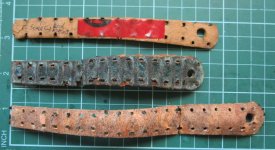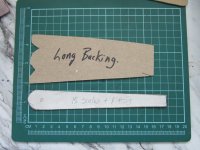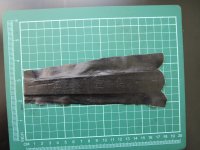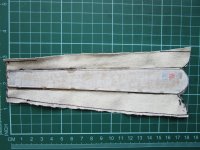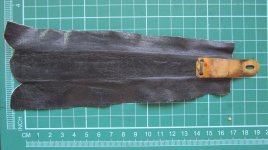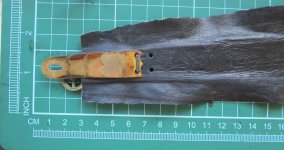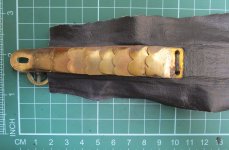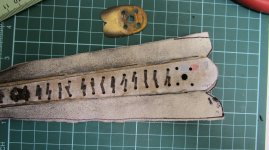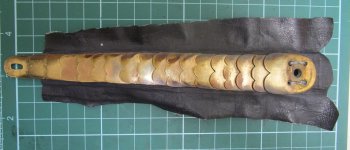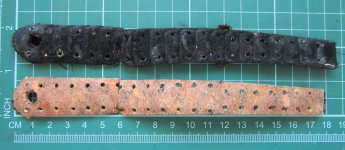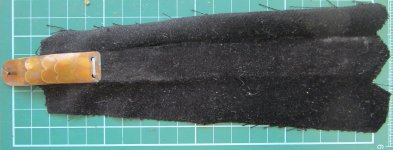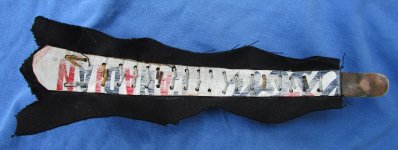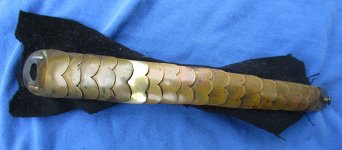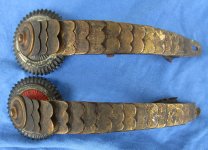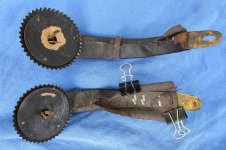At least 10 years ago, I posted a chin scale rebuild thread. I have not searched for it but probably all of the photos are missing. A couple of our European members have posted on the same topic showing great results. However, as I am engaged in 2 rebuilds at the moment....one Infantry Officer and the other a convex (curved) Mounted Officer, I thought why not take numerous pictures of the process and create a post here? Simply put, this is how I do it. Both of these scales have characteristics which I have never seen before.
So let's take a look at the infantry flat scale first:
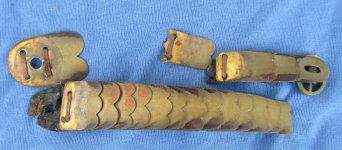
This is a typical example of a broken scale, you can see how bright they were when new in contrast to 100+ years of oxidization. Those original staples will be used in the restoration, most are still viable after a century.
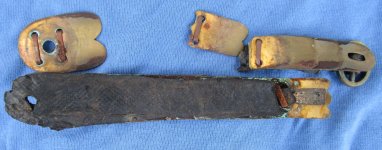
One unusual feature of this scale is the thin metal strip used in the scale backing. I have never seen this before.
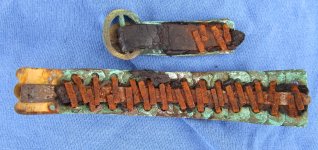
Severely rusted staples, again, unusual as is the thin metal strip and the fact that the scale backing has disintegrated. None of this is typical for an Imperial German scale.
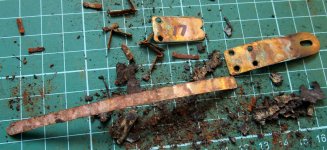
Broken rusted staples, green verdigris oxidization and the complete disintegration of everything except the thin brass strip! A complete mess! Usually, as we will see in our next convex scale the staple strip although broken, can still be used to make a new template for the rebuild. I blame this brass strip for somehow creating a chemical reaction which reduced everything to dust and broken rust. So, our problem is, we have no original template for the staple strip. However, after doing this for 20+ years I always saved and duplicated previous strips so I do have something that will work in this case. Note also the 4 holes punched into the female end fitting, this allows 2 scales to be fastened to this fitting, some will only have 2 holes for only one scale. Last, this original brass strip will NOT be used in the restoration. Second last, always number the scales as you remove them. To be continued..
So let's take a look at the infantry flat scale first:

This is a typical example of a broken scale, you can see how bright they were when new in contrast to 100+ years of oxidization. Those original staples will be used in the restoration, most are still viable after a century.

One unusual feature of this scale is the thin metal strip used in the scale backing. I have never seen this before.

Severely rusted staples, again, unusual as is the thin metal strip and the fact that the scale backing has disintegrated. None of this is typical for an Imperial German scale.

Broken rusted staples, green verdigris oxidization and the complete disintegration of everything except the thin brass strip! A complete mess! Usually, as we will see in our next convex scale the staple strip although broken, can still be used to make a new template for the rebuild. I blame this brass strip for somehow creating a chemical reaction which reduced everything to dust and broken rust. So, our problem is, we have no original template for the staple strip. However, after doing this for 20+ years I always saved and duplicated previous strips so I do have something that will work in this case. Note also the 4 holes punched into the female end fitting, this allows 2 scales to be fastened to this fitting, some will only have 2 holes for only one scale. Last, this original brass strip will NOT be used in the restoration. Second last, always number the scales as you remove them. To be continued..
Last edited:

